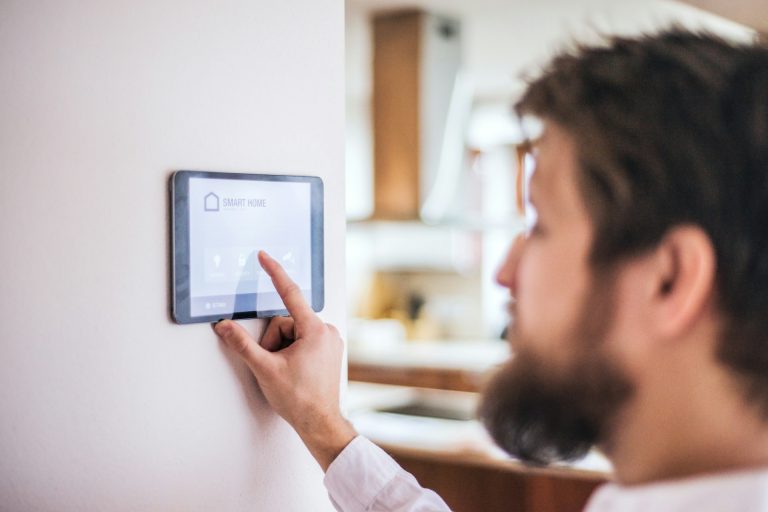The smart home revolution isn’t just for homeowners anymore. With the rise of wireless switches and smart lighting systems, renters across the UK are finding new ways to make their homes smarter, safer, and more energy-efficient — all without touching a single wire.
For tenants, upgrading to a “smart” lifestyle used to be a complicated process. Traditional systems often required rewiring, drilling, and landlord approval, all of which were deal-breakers for those living in rented properties. But today, thanks to wireless technology, renters can easily enjoy the same level of convenience and energy savings as homeowners and take their devices with them when they move.
The Rise of the Smart Renter
Over the past decade, the smart home market in the UK has experienced significant growth, with one in three households now utilising some form of connected device, according to a 2024 report from Statista. What’s interesting is the growing number of renters driving this adoption.
Younger renters, particularly those in their 20s and 30s, are leading the charge. Many people live in city flats or shared houses where energy bills are either split or included in the rent. For them, smart devices, especially wireless switches, aren’t just about convenience; they’re a way to gain control over energy use and create a sense of ownership in spaces that aren’t technically theirs.
No Wires, No Drills, No Problem
The key advantage of wireless switches is that they don’t require permanent installation. Unlike traditional switches, they use radio frequency (RF), Wi-Fi, or Bluetooth to communicate with smart bulbs and plugs. This means no rewiring, no need for an electrician, and no permission from your landlord.
Wireless switches can be adhered to the wall with adhesive pads, placed on a desk, or even carried around a flat surface. They can be paired with smart bulbs, lamps, or appliances — all of which can then be controlled via smartphone apps or voice assistants, such as Alexa and Google Home.
When it’s time to move out, tenants can simply peel them off and take them along. It’s home automation made portable.
How Renters Are Using Wireless Switches
Wireless switches are surprisingly versatile, offering both practicality and comfort. Here are a few common ways renters are using them:
- Smart Lighting Control – Replace a standard lamp bulb with a smart bulb and connect it to a wireless switch or app. You can dim the lights, change colours, or set timers without touching a wall switch.
- Energy Efficiency – Utilise smart plugs and switches to automatically turn off electronics when not in use. Perfect for reducing standby power in TVs, consoles, and chargers.
- Comfort and Accessibility – Control lighting or heating without getting up, ideal for those with limited mobility or for late-night use.
- Security and Safety – Set lights to switch on at dusk or while you’re away, helping deter burglars without needing a wired timer or alarm system.
For renters, these features create the same modern, connected experience homeowners enjoy but without any permanent modifications.
The Energy and Cost Savings
The benefits aren’t just about convenience. According to research by the Energy Saving Trust, smart lighting and wireless controls can reduce electricity use by 25–45%, depending on their use.
Take a typical one-bedroom flat, for example. By introducing motion sensors in hallways, smart bulbs in the living area, and automatic shut-off timers in the kitchen, renters could save up to £80 per year on electricity. For those paying their own bills, that’s a noticeable difference, and for shared accommodation, it helps reduce disputes over “who left the light on.”
Beyond cost savings, there’s also an environmental impact. Even small changes, such as using smart lighting that adapts to daylight, can help reduce a home’s carbon footprint by 200–300 kilograms of CO₂ per year.
Freedom, Flexibility, and Future-Proof Living
Wireless technology offers renters something rare: control and flexibility. These devices don’t need drilling, wiring, or any permission slips — making them ideal for flats, student accommodation, or short-term lets.
They also give renters the freedom to create their own connected ecosystem. A smart switch purchased today can be linked to future devices, such as smart thermostats or window blinds — without starting from scratch.
And because most systems integrate with major platforms like Apple HomeKit, Google Home, or Amazon Alexa, they’re future-proof investments that adapt as technology evolves.
How to Get Started
Getting started with wireless switches is easy and affordable. Most smart bulbs and wireless switch kits start from £15–£25, and setup takes just a few minutes. Here’s a simple starter plan for renters:
- Begin with lighting – Swap out a main bulb or lamp for a smart bulb and pair it with a wireless switch or app.
- Add smart plugs – Automate appliances such as fans, heaters, or TVs.
- Experiment with automation – Create schedules or motion-activated rules using your smartphone.
- Expand gradually – As you get comfortable, add more rooms or devices to your system.
Within a few weeks, most renters find that not only do they use less energy, but they also enjoy the comfort and modern feel of a truly “smart” home.
The Bottom Line
For today’s renters, wireless switches are changing the rules. They make it possible to enjoy energy-efficient, tech-savvy living — without the need for tools, wires, or landlord approval.
As smart technology continues to become more affordable and accessible, it’s clear that the future of renting is wireless. From city flats to student digs, tenants are proving that you don’t need to own a home to live like a tech-savvy homeowner.


